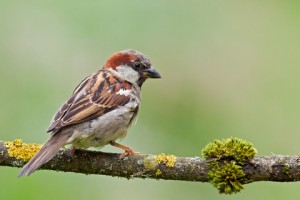Category: wildlife
Katie Singer: Radiation Soup
International Scientists Appeal to U.N. to Protect Humans and Wildlife from Electromagnetic Fields and Wireless Technology
NEW YORK–Today 190 scientists from 39 nations submitted an appeal to the United Nations, UN member states and the World Health Organization (WHO) requesting they adopt more protective exposure guidelines for electromagnetic fields (EMF) and wireless technology in the face of increasing evidence of risk. These exposures are a rapidly growing form of environmental pollution worldwide.
“ICNIRP guidelines set exposure standards for high-intensity, short-term, tissue-heating thresholds. These do not protect us from the low-intensity, chronic exposures common today. Scientists signing the Appeal request that the UN and member nations protect the global human population and wildlife from EMF exposures.”
The “International EMF Scientist Appeal” asks the Secretary General and UN affiliated bodies to encourage precautionary measures, to limit EMF exposures, and to educate the public about health risks, particularly to children and pregnant women.
The Appeal highlights WHO’s conflicting positions about EMF risk. WHO’s International Agency for Research on Cancer classified Radiofrequency radiation as a Group 2B “Possible Carcinogen” in 2011, and Extremely Low Frequency fields in 2001. Nonetheless, WHO continues to ignore its own agency’s recommendations and favors guidelines recommended by the International Commission on Non-Ionizing Radiation Protection (ICNIRP). These guidelines, developed by a self-selected group of industry insiders, have long been criticized as non-protective.
The Appeal calls on the UN to strengthen its advisories on EMF risk for humans and to assess the potential impact on wildlife and other living organisms under the auspices of the UN Environmental Programme, in line with the science demonstrating risk, thereby resolving this inconsistency.
Martin Blank, PhD, of Columbia University, says, “International exposure guidelines for electromagnetic fields must be strengthened to reflect the reality of their impact on our bodies, especially on our DNA. The time to deal with the harmful biological and health effects is long overdue. We must reduce exposure by establishing more protective guidelines.”
Joel Moskowitz, PhD, of University of California, Berkeley, says, “ICNIRP guidelines set exposure standards for high-intensity, short-term, tissue-heating thresholds. These do not protect us from the low-intensity, chronic exposures common today. Scientists signing the Appeal request that the UN and member nations protect the global human population and wildlife from EMF exposures.”
International EMF Scientist Appeal: EMFscientist.org
US Department of the Interior warns: communication towers threaten birds


 In a letter about a new nation wide wi-fi deployment (called *FirstNet), the US Department of the Interior states the wireless proposal threatens birds, and is not consistent with current information and laws that protect birds. They called for an environmental review.
In a letter about a new nation wide wi-fi deployment (called *FirstNet), the US Department of the Interior states the wireless proposal threatens birds, and is not consistent with current information and laws that protect birds. They called for an environmental review.
 Two hundred forty one bird species are at mortality risk from both tower collisions and from exposure to the radiation towers emit. This includes birds that are endangered or threatened, Birds of Conservation Concern, migratory birds, and eagles. They estimate up to 6.8 million bird deaths a year may result from collisions with towers.
Two hundred forty one bird species are at mortality risk from both tower collisions and from exposure to the radiation towers emit. This includes birds that are endangered or threatened, Birds of Conservation Concern, migratory birds, and eagles. They estimate up to 6.8 million bird deaths a year may result from collisions with towers.

 Studies of radiation impacts on wild birds documented nest abandonment, plumage deterioration and death. Birds studied included House Sparrows, White Storks, Collared Doves, and other species. Studies in laboratories of chick embryos documented heart attacks and death.
Studies of radiation impacts on wild birds documented nest abandonment, plumage deterioration and death. Birds studied included House Sparrows, White Storks, Collared Doves, and other species. Studies in laboratories of chick embryos documented heart attacks and death.
 In their letter, The Dept of the Interior criticizes the FCC’s radiation safety guidelines stating,“the electromagnetic radiation standards used by the Federal Communications Commission (FCC) continue to be based on thermal heating, a criterion now nearly 30 years out of date and inapplicable today.”
In their letter, The Dept of the Interior criticizes the FCC’s radiation safety guidelines stating,“the electromagnetic radiation standards used by the Federal Communications Commission (FCC) continue to be based on thermal heating, a criterion now nearly 30 years out of date and inapplicable today.”
For more information see Dept of Interior letter and background: http://www.ntia.doc.gov/files/ntia/us_doi_comments.pdf
*In 2010 President Obama called for a new nationwide wireless network. FirstNet is that broadband initiative. See background proposal and More info on FirstNet.
“The world is going wireless and we must not fall behind. ” President Barack Obama
See this website for a compilation of studies on effects on wildlife http://www.emfresearch.com/emf-wildlife/
Protect Monarch Butterflies from radiation
 On August 21, 2013 the city of Pacific Grove will hear an appeal on the placement of an AT&T 4G cell tower next to the Monarch Butterfly sanctuary.
On August 21, 2013 the city of Pacific Grove will hear an appeal on the placement of an AT&T 4G cell tower next to the Monarch Butterfly sanctuary.
Pacific Grove is an overwintering area for the monarch butterfly. Each year, these butterflies migrate thousands of miles from Canada to Pacific Grove and other special places in the Western Hemisphere. They arrive and stay through several reproductive cycles, and then continue their travels.
Pacific Grove has an ordinance specifically protecting monarch butterflies. It has a small area set aside for the butterflies as a sanctuary, but the butterflies roost and feed in trees in the surrounding area. Many travel books feature this sanctuary to attract visitors from all around the world.
AT&T wants to put a permanent set of cellular 4G antennas at Wilkie’s Inn, (1038 Lighthouse Avenue) next to the butterfly sanctuary. This is one of the few monarch habitats the butterflies rely on.
Here’s two studies that indicate insects are harmed by radiation. Food collection and response to pheromones in an ant species exposed to electromagnetic radiation found exposure to radiation caused colony deterioration and affected social insects’ behavior and physiology. Another study Oxidative and genotoxic effects of 900 MHz electromagnetic fields in the earthworm Eisenia fetida found radiation caused genotoxic effects and DNA damage in earthworms.
Please take action to help stop these antennas in Pacific Grove, California. Sign this petition by Tuesday, August 20, 2013 Read more and sign the petition.
UPDATE: The city Pacific Grove council voted against the butterflies. The petition author writes, “Thank you to the hundreds of supporters on this issue. Sad to say (but not surprised) that all but one of the city council members voted for the cell antennas to be built near one of the rare monarch butterfly overwintering sites in Pacific Grove. AT&T must’ve made the incentive worth while.The city is supposed to protect the butterfly sanctuary and didn’t.”
Looking to Connect?
Cell Phone Radiation Disturbs Honey Bees
 Daniel Favre examines the connection between cell phone radiation and honey bees in “Mobile Phone Induced Honey Bee Worker Piping“. Colony Collapse Disorder has been linked to a variety of potential causes, including pesticide poisoning, and varroa mites. With the onslaught of environmental radiation from cell phone, cell tower and Smart Meters networks it is important this study be widely read and disseminated. The study abstract states,
Daniel Favre examines the connection between cell phone radiation and honey bees in “Mobile Phone Induced Honey Bee Worker Piping“. Colony Collapse Disorder has been linked to a variety of potential causes, including pesticide poisoning, and varroa mites. With the onslaught of environmental radiation from cell phone, cell tower and Smart Meters networks it is important this study be widely read and disseminated. The study abstract states,
“The worldwide maintenance of the honeybee has major ecological, economic, and political implications. In the present study, electromagnetic waves originating from mobile phones were tested for potential effects on honeybee behavior. Mobile phone handsets were placed in the close vicinity of honeybees.
The sound made by the bees was recorded and analyzed. The audiograms and spectrograms revealed that active mobile phone handsets have a dramatic impact on the behavior of the bees, namely by inducing the worker piping signal. In natural conditions, worker piping either announces the swarming process of the bee colony or is a signal of a disturbed bee colony. ”
Other publications on radiation and bees include:
Bees, Birds and Mankind, Destroying nature by electrosmog by Ulrich Warnke
The Birds, the Bees and Electromagnetic Pollution, by Dr. Andrew Goldsworthy, May 2009




